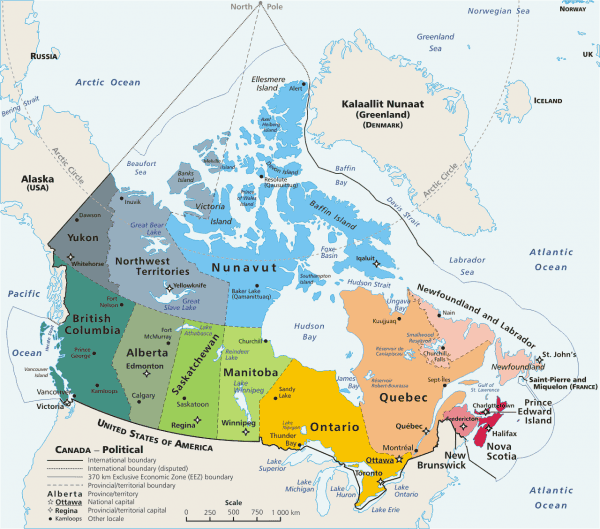Eleanor Ross discovers there is far more to the Canadian Arctic than conventionally thought or reported. She shares how she went about crafting a constructive journalism feature from the far-flung icy region of Nunavut — for Positive News
I am attracted to the harsh, to the foreign and to the remote. I am drawn to learn about the people that inhabit these places; that humans can survive or even thrive in the most extreme conditions is remarkable. But despite the contrasting environments we might live in, I’m convinced we are more similar than we realise. I prefer to look for similarities between people rather than differences: that’s what drove me to become a journalist in the first place.
A few years ago there was a spate of articles on the high price of fruit and vegetables in the Canadian Arctic (the vast, most northern region of Canada). At first glance, it wasn’t groundbreaking stuff, but I started to think about the state of society when a lettuce costs $28 (£15) – is there malnutrition? What are pay rates like? Could this be a contributing factor to why suicide rates are 11 times higher in the Canadian Arctic than in the rest of Canada?
Other elements began to draw me in too. I found out about the world’s most northern circus while researching for a book I am writing on the Arctic. The book’s premise is, in a nutshell, how the 21st century is affecting the traditional way of life in the region. I had been travelling around the Arctic Circle for various chapters, from northern Russia to Svalbard, and was looking into arts programs at universities.
I came across arts festival Alianait and, while watching clips on YouTube, discovered ArtCirq. When I first travelled up to Iqaluit in northern Canada, I had no idea ArtCirq would even be performing — it was a dream come true to see them, as I’d initially been disappointed not to make it up to Igloolik where they train.
As I journalist, I feel as though I have two duties: one to tell a story, and one to connect with and understand the community I’m working with. Going into a new place, producing a story as quickly as possible and leaving, possibly causing more harm than good, has never felt like the right approach to me. But it can be difficult to find the right ‘way in’ to a place that’s entirely unfamiliar.
I am fortunate to have a strong network from the international school I attended in Wales. Before I made the long trip to Iqaluit I asked:“did anyone know someone in the area?”
Jessica Penney got in touch. “It’s not all bad up here,” was one of the first things she said to me. “So many people come up to Nunavut and just say how terrible it is, but it isn’t.” Her words gave me added resolve to find a different kind of story. Yes, there are high suicide rates, yes, there are expensive groceries, and yes, there are stories of violence and abuse. But at its heart, Nunavut harbours communities where people are, for the most part, trying to improve their lot.
It was finding out about ArtCirq that made me realise how much life there is in the Canadian Arctic. I began to read about the history of Nunavut. I read about the boarding schools that local people were sent to just a few decades ago so they would forget their culture and customs. I read about the ongoing battles between big corporations and local people, about people being forced to give up their lands and borders.
I found that being prepared was the best thing to do when visiting a small community that has a lot of negative collective history. I learned how the Inuit people describe themselves, I studied their history, and I read up so I wouldn’t say anything inflammatory or offensive. It was a start, at least.
To write about suicide, I obviously needed to ask about suicide. This was incredibly difficult. Journalists often need to gain a person’s trust and, sometimes, even friendship, but we also need to ask the questions that will lead to a good story. I never directly asked somebody about suicide. Instead, I planted the idea in the conversation and alluded to “challenges” and “difficulties”.This way if somebody wanted to talk about suicide, there was the space for it. In Nunavut, I found that suicide was such a big problem that people encouraged each other to talk about it as a form of prevention.
I found that being prepared was the best thing to do when visiting a small community that has a lot of negative collective history.
There are so many negative stories that could be told about the Canadian Arctic, but this is a region that just keeps getting beaten down. Why does it need more negative reportage?
The region is beautiful, friendly and fascinating, and it has some of the best sunsets I’ve ever seen. The sea ice is frozen into June and huskies sleep outside year round, inured to the cold. To let off steam, local men take their skidoos out across the sea ice to hunt. Kids enjoy peddling around the roads on their bikes. Music is important to people here. In short, it’s a regular community with normal, everyday problems, and normal, everyday joy too.
Eleanor Ross is a writer and journalist who lives in London

